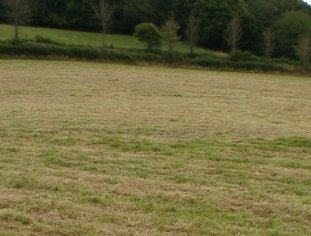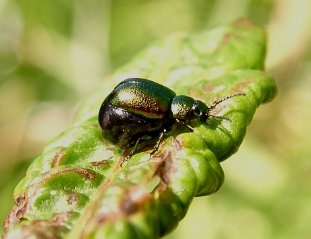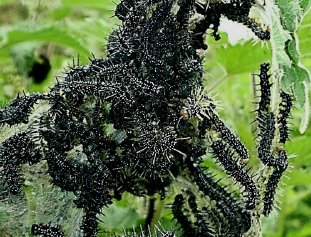 |
Relatively few small mammals or insects such as
butterflies can live in really intensive grassland. This is because the harvesting or
grazing regimes have such an effect on the habitat. Even those butterfly species whose
caterpillars feed on grasses cannot survive. This is because the grasses are usually of
the wrong species. There is also not enough time for the butterfly to complete its
lifecycle, as the grass is frequently removed either by grazing or for silage. |
 |
However, intensive grasslands host a
range of invertebrate life. Moreover, despite the farmer's efforts, there are usually a
number of weeds in the grassland. These weeds will also support a variety of
invertebrates. For example, a jewel-like leaf beetle, can often be found on Docks. Before
egg-laying the female's abdomen becomes grossly extended (left). This is one of
many invertebrates encountered on Docks. |
 |
Other weeds, including nettles support
many invertebrates, from aphids to Peacock Butterfly caterpillars (left). However,
the caterpillars will only survive if the nettles are left for long enough for them to
complete their life cycle. It is against the farmer's interests to allow nettles to invade
the fields. Nevertheless, weeds such as nettles and thistles often survive in the hedges
or margins of the fields. |
|
Continue |